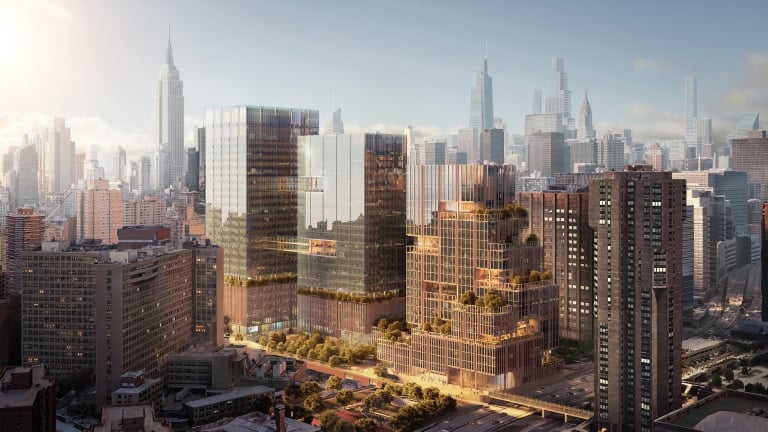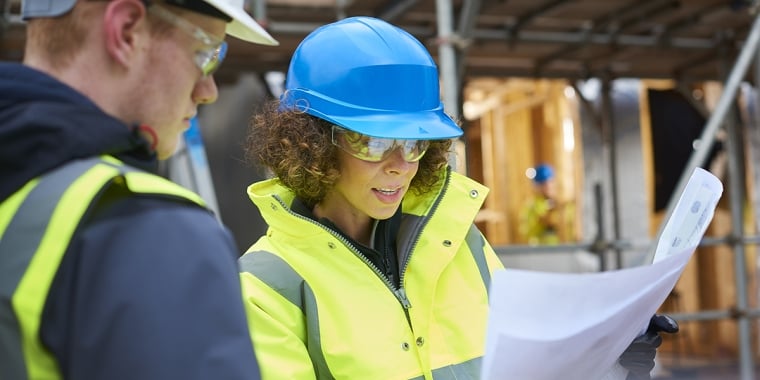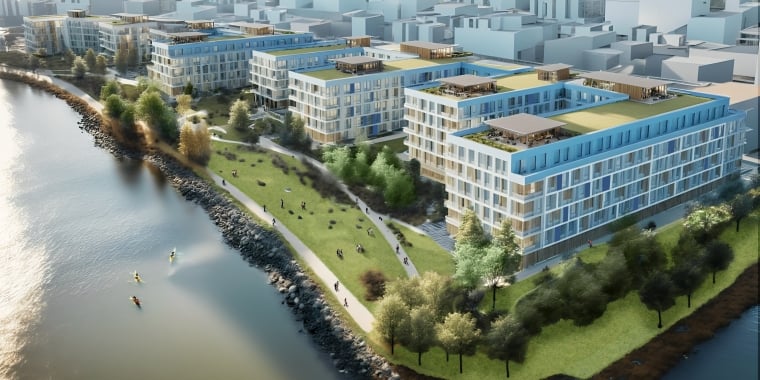NYCEDC Announces Skanska as Construction Manager for SPARC Kips Bay, a First-of-its-Kind Life Sciences Innovation, Career, and Education Hub

Skanska Will Manage the Construction of SPARC Kips Bay, Including Over 600,000 Square Feet of Education Facilities and New Public Open Space
SPARC Kips Bay Expected to Generate Approximately $42 billion in Economic Impact Over the Next 30 Years; Create Over 15,000 Jobs, Including 12,000 Construction and 3,100 Permanent Jobs in the Life Sciences Sector
NEW YORK, NY—Today, New York City Economic Development Corporation (NYCEDC) announced Skanska as the construction management firm to oversee the construction of the first phase of the Science Park and Research Campus (SPARC) Kips Bay project, a first-of-its-kind life sciences innovation, career, and education hub that will further anchor the life sciences industry in New York City. The total anticipated contract award is expected to be approximately $1.6 billion, and the work will be governed under a Project Labor Agreement (PLA). Construction is expected to begin at the end of 2025 and is anticipated to be completed in 2031. SPARC Kips Bay, a joint New York City and New York State funded project with a $1.6 billion public investment, will transform Hunter College’s Brookdale School of Nursing Campus into nearly two million square feet of brand new state-of-the-art academic, healthcare, and life sciences space.Skanska’s initial involvement in this project will be to provide pre-construction services.
Skanska is one of the world’s largest development and construction companies and has overseen many hallmark projects throughout New York City including the reconstruction of a waterfront park and pier in Staten Island as part of the Staten Island North Shore Action Plan; the East Midtown Greenway; and the New York City Public Health Lab. Skanska will oversee the day-to-day management of the construction site to ensure the safety of the site and inform the community of updates, as well as:
- Deconstruction of the existing buildings on the current Hunter Brookdale School of Nursing campus;
- Construction of the first phase of the SPARC Kips Bay development—over 600,000 square feet of educational facilities for the City University of New York (CUNY) and New York City Public Schools (NYCPS), SPARC Square—a new central public open space on the campus, and flood protection measures;
- And reconstruction of the existing 25th Street pedestrian bridge over FDR Drive with improved community access and universal design.
The project is expected to generate approximately $42 billion in economic impact over the next 30 years; create over 15,000 jobs, including 12,000 construction and 3,100 permanent jobs in the life sciences sector; and transform an entire city block into nearly two million square feet of academic, public health, and life sciences space.
“Our administration is laser-focused on setting the foundation for growing industries that will dominate the 21st century and this historic $1 Billion investment in the life sciences, including a robust plan to hire M/WBEs, is evidence of just how seriously we take that goal while ensuring we are developing the future of this city with a diverse portfolio of businesses,” said Deputy Mayor of Housing, Economic Development and Workforce Maria Torres-Springer. “As we take one step closer to getting shovels in the ground for this transformational project, I want to thank NYCEDC for their steadfast leadership on this project and I look forward to working with Skanska to see this project delivered.”
“This is yet another milestone for a transformative project that will not only cement New York City as the global leader in the life sciences industry but build the critical career pipelines for New Yorkers,” said NYCEDC President & CEO Andrew Kimball. “SPARC Kips Bay will generate enormous economic impact, create tens of thousands of jobs, update outdated city agency buildings, and create an industry pipeline for New Yorkers while bringing dramatic improvements to the public realm in Kips Bay and creating a more equitable and inclusive economy for all New Yorkers.”
This project will be delivered in two phases with phase one including the Hunter College School of Nursing, CUNY Graduate School of Public Health & Health Policy, Borough of Manhattan Community College, open space and flood protection, a health-and-science-focused New York City Public Schools high school, and pedestrian bridge. Phase two will include up to one million square feet of life sciences real estate, a Bellevue/NYC Health + Hospitals outpatient care and advanced nursing practice simulation training center, and the Office of Chief Medical Examiner’s forensic pathology center and forensic toxicology laboratory.
Additionally, as part of the Green Economy Action Plan, SPARC Kips Bay will be the first project to implement NYCEDC’s Circular Design & Construction Guidelines. The guidelines promote reducing embodied carbon, deconstructing buildings in lieu of demolition, and reusing existing materials. By using innovative circular construction methods on this phase of the project, SPARC Kips Bay is anticipated to reduce 26,400 metric tons of carbon emissions – equivalent to removing nearly 5,800 cars from the road. This project will serve as an example in circular construction for other large public and private projects.
Skanska’s proposal also supported NYCEDC’s mission to strengthening Minority and/or Women-owned Business Enterprises (M/WBEs). Their application included an innovative approach towards forming partnerships with M/WBE construction managers and contractors:
- Clear and detailed plans for how these partnerships will contribute to the overall success of the project, including enhancing diversity in the workforce, promoting economic inclusion, and fostering long-term relationships with M/WBE construction managers and contractors;
- Evidence of past successful collaborations with M/WBE construction managers, including references, case studies, and testimonials;
- A 30 percent M/WBE participation goal, as well as a 6 percent goal for certified Service-Disabled Veteran-Owned Businesses (SDVOBs);
- And commitment to providing mentorship, support, and resources to help M/WBE construction managers grow and thrive within the construction industry.
In the year since Mayor Adams and Governor Hochul unveiled the SPARC Kips Bay Master Plan, the city has already advanced many of its initiatives:
- In late 2023, NYCEDC released an RFP for the design of SPARC Square and other public realm improvements, over 600,000 square feet of educational facilities for the City University of New York and New York City Public Schools, flood protection measures, and a new ADA accessible pedestrian bridge for the project’s first phase.
- In April 2024, Ennead Architects was selected to complete the design.
- In June 2024, NYCEDC released the RFP for the construction manager, and the project certified into the Uniform Land Use Review Procedure (ULURP).
- Earlier this month, Manhattan Community Board 6 voted to approve the project.
“We are honored to have been selected by the EDC for this first-of-its-kind infrastructure project and will once again look forward to partnering with them on bringing their vision to life,” said Sean Szatkowski, Executive Vice President – General Manager, Skanska USA Building. “Our extensive experience in building Life Science and Higher Education facilities combined with our ability to bring a full scope of emerging technologies, will allow us to create a state-of-the-art education center in the heart of New York City, featuring life sciences, healthcare, and public health resources.”
“The SPARC Kips Bay project continues to proceed at an impressive pace, and we look forward to the projected groundbreaking next year,” said New York City Chief Medical Examiner Dr. Jason Graham. “This latest development brings us closer to realizing the vision for a thriving life sciences corridor in Kips Bay that nurtures the next generation of leaders in forensic science and medicine.”
“This is an exciting step forward for SPARC Kips Bay and shows our commitment to maintaining New York’s leadership position in the life sciences sector for years to come. This important project will grow the economy and deliver good jobs, a state-of-the-art research center, and new open space for New Yorkers,” said Dan Garodnick, Director of the Department of City Planning. “We were happy to enable its development with zoning changes that supported even more life sciences growth with City of Yes for Economic Opportunity.”
“This ambitious project exemplifies the power of cross-agency collaboration to reshape the Kips Bay neighborhood for future generations,” said Nina Kubota, President and CEO of the New York City School Construction Authority. “The inclusion of a cutting-edge school within this life sciences and public health campus will open up exciting new career paths for students in these expanding fields. It’s a truly impactful initiative that will drive future innovation and strengthen New York’s role as a global leader in creating and attracting accessible jobs in life sciences, health care, and public health.”
“The transformative SPARC Kips Bay initiative continues to make real progress, taking us yet another step closer to realizing a state-of-the art space for education, public health, and life sciences,” said “New” New York Executive Director B.J. Jones. “The strong partnership between the City and State has fueled the momentum to advance the “New” New York Panel’s recommendations to spark even more economic growth, career opportunities, and future-focused innovation in New York City.”
“The SPARC project will ensure that New York City is a leader in the life sciences sector, and getting a construction manager on board is a major milestone in making that goal a reality,” said Manhattan Borough President Mark Levine. “I am excited to see how this project, in addition to delivering all the benefits that come with fostering life sciences, presents opportunities for M/WBE partners, making New York’s construction industry more equitable.”
“Manhattan Community Board Six (CB6) applauds NYCEDC on its selection of a construction manager for the SPARC Kips Bay project. As this project proceeds, CB6 will continue to follow it closely and advocate for our community so that SPARC Kips Bay is a resource the community can be proud of,” said Sandra McKee, Chair of Manhattan Community Board Six.
NYCEDC launched the SPARC Kips Bay Community Task Force and the Kips Bay Science District Education and Workforce Task Force earlier this year. The SPARC Kips Bay Community Task Force, co-chaired by Council Member Keith Powers and Community Board 6 Chair Sandra McKee, was formed to help guide the community engagement process and the development of community design principles for SPARC Kips Bay’s public realm improvements, which was released ahead of SPARC Kips Bay’s ULURP certification in June.
The Kips Bay Science District Education and Workforce Taskforce – a group of over 30 senior life sciences, healthcare, and public health professionals, as well as education and workforce experts—is focused on developing a clear vision for the career pathways, programs, and partnerships needed to ensure Kips Bay provides equitable access for New Yorkers to the City’s health and life sciences ecosystems. These two task forces have provided valuable input for how this project can accomplish its goals of creating vital career pipelines and inclusive benefits, such as new open space for the Kips Bay Community.
Today’s announcement further builds on Mayor Adams’ efforts to develop a “Harbor of the Future” — a multifaceted initiative announced by Mayor Adams in his State of the Cityaddress this year to reimagine New York City’s waterfront and fuel 21st-century growth and innovation. Other generational and forward-looking projects apart of the “Harbor of the Future” include, Willets Point in Queens, Kingsbridge Armory in the Bronx, the Climate Innovation Hub in Brooklyn, the North Shore of Staten Island Action Plan, and the New York Climate Exchange on Governors Island, among others.
About NYCEDC
New York City Economic Development Corporation is a mission-driven, nonprofit organization that works for a vibrant, inclusive, and globally competitive economy for all New Yorkers. We take a comprehensive approach, through four main strategies: strengthen confidence in NYC as a great place to do business; grow innovative sectors with a focus on equity, build neighborhoods as places to live, learn, work, and play; and deliver sustainable infrastructure for communities and the city's future economy. To learn more about what we do, visit us on Facebook, Twitter, LinkedIn, and Instagram.


